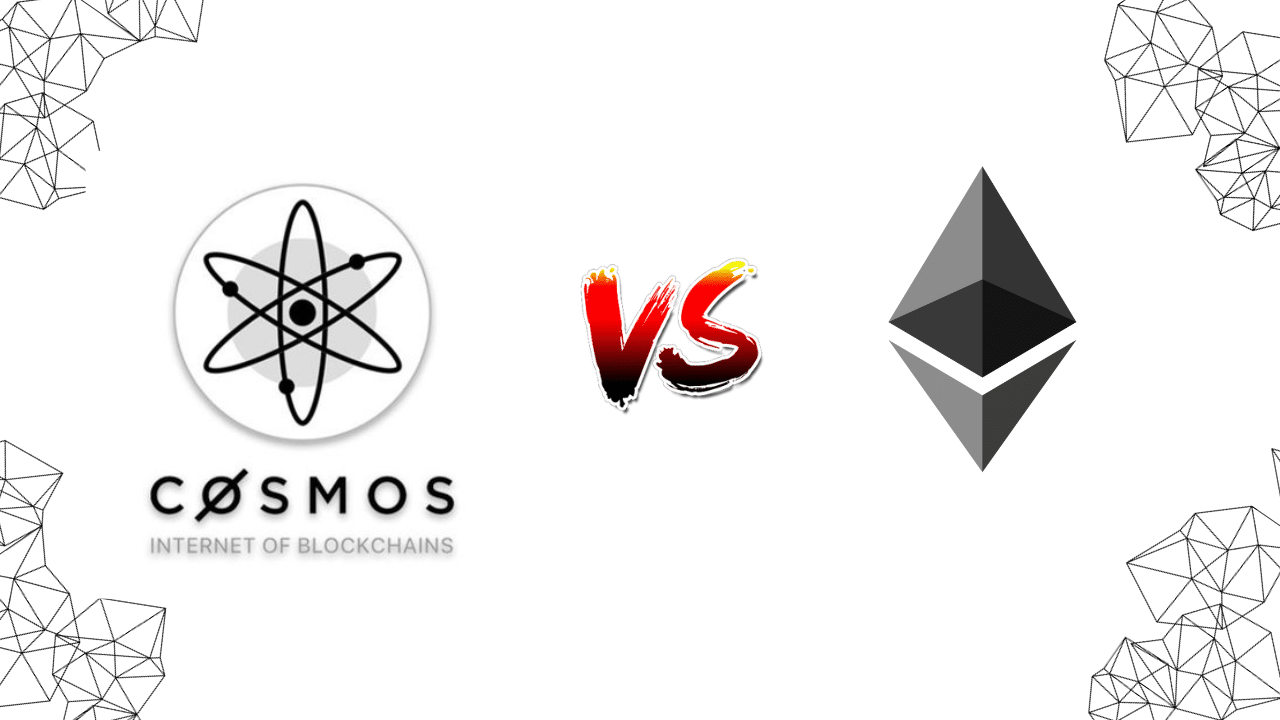Contents
|
|
Blockchain technology is a vast array of related innovations. Its implications span the worlds of finance, economics, computer science, politics, culture – you name it. Check out our comprehensive guide to go deeper into the key concepts: Blockchain For Beginners: What Is Blockchain Technology? A Step-by-Step Guide
Blockchain is the groundbreaking technology that makes cryptocurrencies possible. Without the security and recording power of a blockchain, cryptocurrency would have no real value since anyone could create any amount of money they wanted.
Most of us know that blockchain is the distributed ledger technology protecting Bitcoin, Ethereum, Cardano (ADA), Binance coin (BNB), dogecoin, and other cryptocurrencies.
But did you know that none of this could exist without cryptography? Cryptography is the super-spy level technology that gives blockchain its incredible power. But what is it, and how does blockchain work?
This article will dive into everything you need to know about cryptography. We’ll explore the three main types of cryptography, why blockchain needs it, how cryptography and blockchain work together, and why cryptography makes blockchain unstoppable.
Contents
What Is Cryptography
Cryptography is a form of internet security. It is the process of turning information into code – encryption – so that only the intended recipient can access the information. Encrypting data protects information from would-be hackers, known in the cryptography world as “adversaries.”
How does encryption work? Information in plaintext translates into code or ciphertext with the use of an algorithm and a key. You can use the same key for many plaintext and ciphertext combinations. Hackers should not be able to discover the original text or the key.
Information can be encrypted using a stream cipher, where each byte of the original text is encrypted one byte at a time. The ciphertext has the same length as the original text. You can also encrypt in a block cipher, which encrypts set blocks of data all at once.
Types of Cryptography
We can encrypt data in a few different ways. Each has benefits and drawbacks, and we can also use them to create a more robust encryption process. Let’s look at the three primary types of cryptography.
Symmetric Cryptography
Symmetric cryptography – or symmetric key cryptography – was the first type of encryption used online. Symmetric cryptography translates information into a cipher—or encrypted code. To decrypt the cipher, you need a key.
In symmetric cryptography, both the sender and the receiver use the same key to encrypt and decrypt the data. Because it’s so straightforward, symmetric cryptography can process large amounts of data very quickly.
As you can imagine, though, sharing keys became a problem. Think about when you’re trying to share a password with someone. If you text or email that password, hackers can easily see it. You almost need a password for your password!
Similarly, sharing keys from the sender to the receiver created a vulnerability that hackers could pretty quickly exploit.
This is where the following type of cryptography comes in: asymmetric cryptography.
Asymmetric Cryptography
With asymmetric cryptography, the sender and receiver have different keys. One key is used to encrypt the information, and a separate key is used to decrypt that information at the other end.
But, if the two people essentially have different passwords, how do you ensure that when the information is sent, only the correct receiver can open it? In short, without sharing keys, how do you tell the code to open for the right person?
To solve this problem, asymmetric cryptography uses a system of two keys per user: a public key and a private key. Your public key is unique to you, but everyone else can see it, too. No one knows your private key except for you. It’s like a PIN for your bank account.
The public and private keys work together. So, in a transaction, the person sending information can send it to your public key. Then, in order to decrypt data sent to your public key, you have to have the private key to unlock it.
To send someone a message, you would encrypt it with their public key. Then, only they can unlock it using their private key. Alternatively, if someone adds a digital signature to a set of data with their private key, anyone online can use their public key to decrypt the signature and verify it really is them.
Cryptographic Hash
The final type of cryptography is hashing. A cryptographic hash is a set of text. Any plaintext information can be put through a hashing algorithm and turned into a unique string of text. The text doesn’t mean anything. For example, the word “Hello” can be turned into the sha1 hash: “f7ff9e8b7bb2e09b70935a5d785e0cc5d9d0abf0.”
Once the original data goes through the cryptographic hash function, you can’t reverse the process. That’s how cryptographic hashing differs from symmetric or asymmetric encryption, which you can decrypt with a key. There’s no way to start from a hash you’ve never seen before and deduce what the original data was.
As long as the same hash algorithm is used, the same data will always become the same hash. So, if data along the way was changed, users can tell by comparing it to the final hash. However, hackers have found ways to grab a lot of hashes and then compare them to hashes for common words and phrases. If they find a match, then they know what the hash represents. This is how hackers steal passwords in a data breach.
Another essential feature of hashing is that you can reduce a whole lot of data to a small string of text in a hash. Hashes are always the same length, regardless of how long or extensive the data is. So, hashing is a way to compress information. We’ll explain more about why this is so important, but first, let’s bring in blockchain.
What Is a Blockchain?
Okay, so what does all this have to do with blockchain? Let’s do a brief refresh on what exactly blockchain is.
In the simplest terms, a blockchain is a set of recorded data linked together. In more technical terms, a blockchain is a digital ledger. It records transactions on a network that is shared across a vast web of computer systems, also called nodes.
A “block” is a set of recorded transactions. The “chain” is the combination of transactions as they are added to the ledger. All transactions are always visible to every node on the network.
Why Is There so Much Hype Around Blockchain Technology?
When the current form of Bitcoin and blockchain technology hit the public in 2008, it caused a buzz worldwide. Used with bitcoin or other cryptocurrencies, blockchain technology allows people to acquire and move money without any centralized bank or authority. If you’re someone who thinks banks have way too much power and are way too corrupt, the idea of a decentralized currency has massive appeal.
The only issue with decentralizing currency is that then anyone could just send themselves millions of dollars or create as much money as they wanted – causing money to lose any real value.
With blockchain, that problem is solved. Because blockchains record digital transfers across an entire network, you can’t just send yourself money. The whole network has to sign off on whether you’ve completed valid crypto transactions or not.
Also, it’s almost impossible to hack the system because each computer on the network holds the record of the transaction. You can see if someone meddled with a block right away.
Blockchain technology has implications for nearly every part of our global economy and supply chain. However, we still have a long way to go before this emerging technology is widely accepted.
Use of Cryptographic Hashing in Blockchain Cryptography
If a blockchain is a digital ledger of every transaction ever made in a specific cryptocurrency or network, that’s an awful lot of information. How do you simultaneously store all that data while keeping it secure?
Enter cryptographic hashing.
Remember how a hash algorithm can take data of any length or size and record it as a limited, uniform set of text? This is how millions of transactions can be recorded in a feasible way.
When a transaction is verified, it gets put through a hash algorithm, and the hash is added to the blockchain. As new transactions continue to be confirmed, hashed, and added, the new hashes are put through the hash algorithm together, and a new unique hash is added that records both hashes from the original transactions.
Hashes continue to be combined into new hashes where the footprint of the original is still accessible. The single combined hash is called the “root hash.” We call this process a Merkle Tree. You can basically combine multiple transactions into a single small string of text.
What Does Cryptography Bring to Blockchain?
Here’s what cryptography brings to blockchain.
Security
Cryptography is key to the security of the blockchain ledger. Each transaction is recorded on the blockchain using encrypted data. Each user can access their own information and buy and sell crypto securely, using their public and private key.
With cryptographic hashing, blockchains record root hashes with each transaction securely coded within them. If someone tries to tamper with data from any part of the blockchain, the change will result in a completely different hash at the root hash. By comparing that root hash to the root hash on their own computer, other users can see that the data is compromised.
Scalability
Cryptographic hashing allows limitless transactions to be recorded securely across the network. Since multiple transactions can combine into one hash, blockchains can continue growing at scale.
Reliability
Cryptographic hashing is irreversible so that no one can undo transactions. This process keeps them safe from any adversarial action and ensures that all users can rely on the accuracy of the digital ledger.
Final Thoughts – Why Cryptography Makes Blockchain Unstoppable
The technology of cryptography is the foundation on which blockchain is built. Cryptography gives us the tools to encrypt, send cryptocurrency safely, and record transactions over time. It allows us to trade cryptocurrency securely without any centralized authority, and it ensures blocks will continue to be added to the chain without limit.
Cryptographic hashing allows blockchains to store huge numbers of transactions and protects those transactions from hackers. It makes online transactions safe, verifiable, and scalable. In short, cryptography truly makes blockchain unstoppable.








